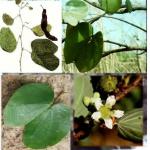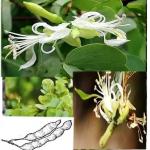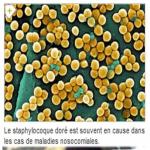Herbal Tea 419: Parrot's Beak Natural Remedy Parrot's Beak
Parrot's Beak Osteophyte Osteophyte Parrot's Beak Natural Treatment to cure these growths that bother our joints
Parrot Beak Treatment Natural Parrot Beak Treatment. If you suffer from a parrot's beak or osteoarthritis, here is a treatment that works and other remedies that relieve our joints. Indeed, the parrot's beak or osteophyte designates a bone growth in the context of degenerative joint diseases. The development of these growths is called osteophytosis. It is one of the complications of osteoarthritis
Click on ewebio.com for your Natural Parrot Beak Treatment
40,00€ excl. tax - 40,00€ inc. tax
- Supplier : Afrique-bio.
- Manufacturer : Afrique-bio
Parrot's Beak: Definition Parrot's Beak Natural Remedy
Definition of Parrot's Beak Disease
Parrot's beak disease, or osteophyte, is a bony growth that develops at a joint. It is a degenerative joint disease that can appear at any joint. Parrot beaks are often painless, and result from a reaction of the bone to abnormal pressure exerted on it. This phenomenon is called osteophytosis. Moreover, the common name for osteophytes, parrot beaks, comes from their shape, which is reminiscent of the hooked beak of these birds.
Natural Parrot Beak Treatment
If you suffer from knee parrot beak or other forms of degenerative osteoarthritis, then 419 herbal tea is for you. Parrot's beak knee natural remedy, quickly relieves and makes valid
#Feuilledelaurier#clousdegirofle.Les bienfaits du clous de girofle et du Laurier#clovesbenefits
Osteophytes Parrot's Beak Location
All the joints can be affected by this growth and especially the joints most stressed in the movements:
knees ;
toes
pegs
hips ;
spine, especially in the lumbar and cervical vertebrae;
fingers
neck
Origin of parrot beaks
The formation of parrot beaks corresponds to a reaction of the bone to abnormal pressure exerted on it following osteoarthritis or other conditions. To relieve the excessive pressure exerted on the joint, the bone produces, at its distal ends, immature bone tissue, to increase the bone contact surface, on which the pressure will be exerted. The formation of this new bone tissue is generally anarchic. All forms of osteoarthritis can be accompanied by the formation of parrot beaks, including:
Gonarthrosis or osteoarthritis of the knee;
Coxarthrosis or osteoarthritis of the hip;
Cervical osteoarthritis
The progressive wear of bone cartilage during osteoarthritis causes an abnormal reaction of bone tissue reconstitution, to compensate for the vacuum created in the joint. Osteophytosis is not observed in the early stages of osteoarthritis, but rather in the progressive stages.
Moreover, if osteophytosis is very frequently associated with osteoarthritis, it can also occur after a bone fracture, undiagnosed (small fracture without apparent clinical signs), or badly reduced.
Symptoms of parrot beak
The parrot's beak itself does not cause particular pain. It only corresponds to a reaction mechanism of the bone to relieve too much pressure on the joint. As such, it testifies to a joint disease, such as osteoarthritis, which is often accompanied by sometimes very significant and very disabling pain, such as:
Knee pain ornostalgiaa;
Back pain or low back pain
While a parrot's beak is usually not painful on its own, it can depend on its size and location, cause functional impairment, marked by joint stiffness. In general, however, it remains difficult to distinguish the symptoms specifically linked to osteoarthritis from those specifically linked to osteophytosis.
Furthermore, at the joints of the spine, the formation of parrot beaks can lead to a reduction in the space of the vertebral canal containing the spinal cord. Osteophytes can sometimes compress the nerve roots coming from the spinal cord and then cause characteristic symptoms such as:
muscle weakness;
paresthesias (abnormal sensations reminiscent of tingling);
neurological pain.
Diagnosis of osteophytes
Parrot's beaks or osteophytes are most often not painful on their own and therefore are not usually a reason for consultation. On the other hand, the diseases they accompany cause pain that justifies specific medical examinations. Clinical examination cannot distinguish osteophytosis from other joint pathologies, such as:
Osteoarthritis;
Arthritis (inflammation of the joints);
Capsulitis (inflammation of the joint capsule of the shoulder)
Diagnosis of Osteophytes in case of Arthrosis disease
Osteophytes are sought in the context of the diagnosis and follow-up of osteoarthritis disease because they testify to abnormal pressures and cartilage degradation, which occur at the level of the joints and which are responsible for the bone consequences of the disease.
Although clinical examination of joint movement may raise suspicion of an osteophyte, confirmation of the presence of parrot beaks relies on imaging tests, such as:
X-rays of the affected joints;
An ultrasound of the painful areas;
or a scanner.
The treatment of parrot beaks
Parrot beaks aren't painful and don't often require treatment except for osteoarthritis. The patients who suffer from it do not even know it and so much the better.
However, the discovery of a parrot's beak at the level of a joint nevertheless requires regular medical supervision. Indeed, the evolution of the parrot beak must be controlled to ensure that it does not cause significant functional impairment, which could have consequences on the patient's quality of life.
When to Treat Parrot's Beak
On the other hand, the specific management of osteophytes becomes necessary in two specific contexts:
If the bony growth compresses a nerve root, causing sometimes significant neurological symptoms. This situation occurs particularly at the level of the spine.
In case of significant functional discomfort, when the parrot's beak prevents normal joint movement. This situation can occur at the level of the hip, the spine, or the knee.
In both cases, surgery may become necessary. The surgical procedure consists of completely removing the bony growths. The risk of recurrence is high
Furthermore, in some cases where osteoporosis and osteoarthritis are very progressive, the joints can be so affected that a joint prosthesis may become necessary, in particular:
hip prosthesis ;
or a knee prosthesis
Please reach us at http://wa.me//+22967546677
Click below to order clove oil
Book an appointment with lady feranmi on
Add a comment









